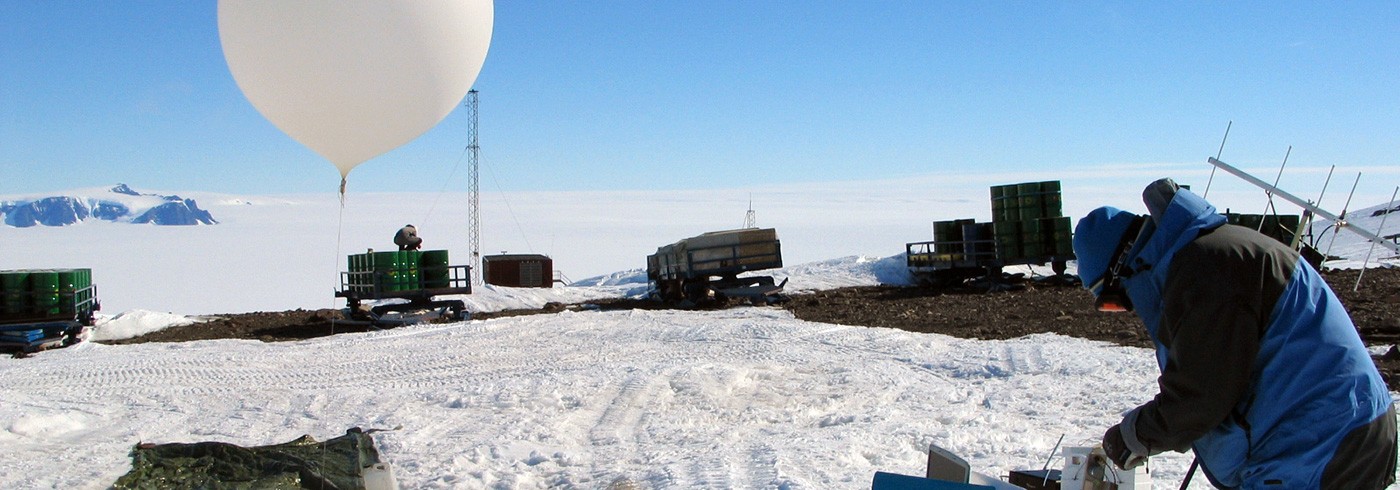MARA: moveable atmospheric radar for Antarctica
1 November 2009 - 15 February 2010
Satheesan Karathazhiyath prepares a payload for a balloon flight for studies of atmospheric parameters in the troposphere and stratosphere. Photo: Peter Dalin
Do we really understand the global circulation of the upper atmosphere, i.e., at heights of 60–100 km? Do small-scale processes cause significant mixing of air between various heights close to the surface, i.e., at heights of 0–15 km?
A better understanding of upper-atmospheric circulation is needed for the correct interpretation of observed long-term changes and to improve predictions of the future climate. Greater vertical mixing of air in the lower atmosphere would, for example, lead to the spread of cloud-condensation precursors to wider areas than expected, and to unexpected sources of trace gases in polar ice cores.
Observing the atmosphere
The phenomena we study are evident only at polar latitudes. The work in the 2009/10 season was done at Sweden’s Wasa Research Station, which is at a high geographic but low geomagnetic latitude(73°03’S, 13°25’W). From this location, atmospheric radar allows conditions up to 100 km in height to be studied with minimal interference from geomagnetic disturbances. At lower heights, observable conditions depend on the distance from the coast and on local topography. The studies conducted at Wasa – near the coast, on a small, steep-sided nunatak – will be followed by measurements made under various conditions at other sites.
Our primary instrument was a 54 MHz radar, which measured atmospheric structure, turbulence, and winds at heights of 1–15 km and 80–95 km. Ozonesondes were also used and flown by balloons to heights of up to 25 km.
Already in press
Preliminary results indicate major shortcomings in our current understanding of circulation in the upper atmosphere, and several cases of possible strong vertical mixing in the lower atmosphere. Measurements made under a wider variety of conditions are planned for the future.
One paper using measurements from the 2009/10 season was published in 2010 and further papers are planned. Overview plots of the measurements are available on our website (Swedish Institute of Space Physics) and metadata will be entered into Swedish National Service for Climate and Enviromental Data (SND-KM) when it comes online.








